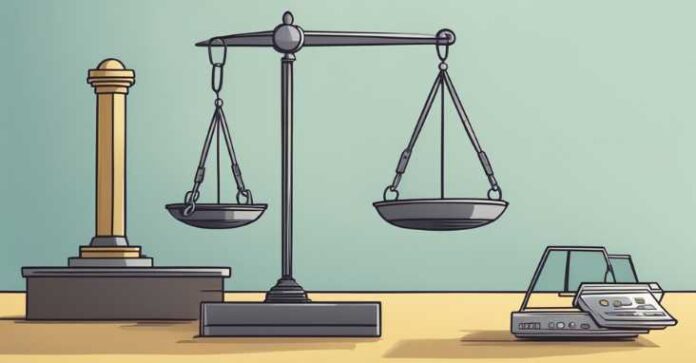To have a strong retaliation case, you need to substantiate your claim with facts and evidence. The case should involve an employee who experienced discrimination or harassment in the workplace, reported the incident, and was then fired, demoted, or otherwise punished for their complaint.
Adverse actions can include termination, demotion, reduction in pay, or other negative consequences. Building a strong retaliation case means documenting everything, from unfair treatment to negative evaluations, and saving emails and other forms of communication. It is possible to win a retaliation case with strong evidence on your side.
However, the burden of proof for retaliation varies depending on the state and the nature of the claim. We will discuss the key factors that make a strong retaliation case and how to protect your rights.
Introduction To Retaliation Cases
To build a strong retaliation case, it’s crucial to have clear evidence supporting your claim. This includes documenting the discrimination or harassment faced, reporting it, and showing subsequent adverse actions by the employer. Strong evidence is key to winning a retaliation lawsuit.
Retaliation In The Workplace
Retaliation in the workplace refers to adverse actions taken by employers against employees who have engaged in protected activities. This can include termination, demotion, harassment, or other forms of punishment.
The Rise Of Retaliation Claims
Retaliation claims have been on the rise in recent years as more employees become aware of their rights and protections under labor laws. Employees are increasingly standing up against unfair treatment and seeking justice for retaliatory actions taken against them.

Credit: blog.serchen.com
Legal Framework
When it comes to building a strong retaliation case, it’s crucial to understand the legal framework that supports such claims. This includes federal and state anti-retaliation laws, as well as the essential elements of a retaliation claim. Let’s explore these key aspects in more detail.
Federal And State Anti-retaliation Laws
Federal and state anti-retaliation laws provide crucial legal protection to employees who have been subjected to retaliatory actions by their employers. Under federal law, Title VII of the Civil Rights Act of 1964 prohibits retaliation against employees who have engaged in protected activities, such as reporting discrimination or harassment. Similarly, state laws may offer additional protections and remedies for employees facing retaliation in the workplace.
Three Essential Elements Of A Retaliation Claim
Building a strong retaliation claim typically involves establishing three essential elements:
- Protected Activity: This refers to actions taken by an employee to assert their rights under anti-discrimination laws, such as filing a complaint or participating in an investigation.
- Adverse Action: The employee must demonstrate that they experienced an adverse action, such as termination, demotion, or other punitive measures, as a result of their protected activity.
- Causal Connection: It’s essential to establish a causal connection between the protected activity and the adverse action, demonstrating that the retaliation was a direct result of the employee’s engagement in protected activities.
Identifying Protected Activities
Identifying protected activities is a crucial aspect of building a strong retaliation case. These activities are actions that are safeguarded by law, and if an employee experiences retaliation as a result of engaging in these activities, they may have a viable case for legal action.
Examples Of Protected Activities
Protected activities include actions such as filing a complaint about workplace discrimination, harassment, or violations of employment laws. Additionally, participating in investigations, providing testimony, or exercising rights under employment laws are considered protected activities.
Misconceptions About Protected Actions
There are misconceptions about what actions are protected under the law. It’s important to note that protected activities are not limited to formal complaints. Informal grievances, discussions with management, or even expressions of support for a coworker’s complaint can also be considered protected activities.
Understanding Adverse Actions
Forms Of Adverse Actions
Adverse actions in a retaliation case can take various forms, such as termination, demotion, suspension, or reduction in pay or benefits. Other forms may include reassignment to less desirable duties, negative performance evaluations, or even threats and intimidation.
Subtle Vs. Overt Retaliation
Retaliation can be either subtle or overt. Subtle retaliation may involve exclusion from meetings, social events, or important communications. Overt retaliation, on the other hand, may include direct threats, unjustified negative evaluations, or punitive actions.
Establishing The Causal Connection
When building a strong retaliation case, establishing the causal connection between the protected activity and the adverse action is crucial. This connection serves as the backbone of the case, demonstrating the direct link between the employee’s actions and the employer’s retaliatory behavior.
Timing Of Retaliatory Actions
The timing of retaliatory actions is a key factor in establishing the causal connection. If the adverse action occurs shortly after the protected activity, it can provide strong evidence of retaliation. For instance, if an employee is terminated or demoted immediately following a complaint or report, it strongly suggests a retaliatory motive.
Evidence Of Retaliatory Motive
Providing evidence of retaliatory motive further strengthens the causal connection. This can include direct statements or communications indicating retaliation, inconsistent or unjustified reasons for the adverse action, or a pattern of retaliatory behavior towards employees who engage in protected activities.

Credit: mrjustice.com
Gathering Compelling Evidence
When it comes to building a strong retaliation case, gathering compelling evidence is crucial to support your claim. Without solid evidence, it can be challenging to prove that you have been a victim of retaliation in the workplace. There are several key elements involved in gathering compelling evidence to strengthen your retaliation case.
Documentation And Record-keeping
Maintaining thorough documentation and record-keeping is essential in building a strong retaliation case. This includes keeping a detailed log of incidents, such as dates, times, and descriptions of retaliatory actions or behaviors experienced in the workplace. Additionally, preserving any relevant emails, memos, performance evaluations, and other pertinent documents can provide valuable evidence to support your case.
Witness Testimony And Support
Securing witness testimony and support can significantly enhance the strength of your retaliation case. Gathering statements from coworkers, supervisors, or other individuals who have observed the retaliatory actions or have knowledge of the circumstances can corroborate your claims. Witness testimony can provide additional credibility and support to your case, reinforcing the validity of your allegations.
Strategies For A Strong Case
When it comes to building a strong retaliation case, it’s essential to focus on proven strategies that can help establish the validity of the claim. By presenting compelling evidence and demonstrating the impact of the retaliation, individuals can increase their chances of a successful outcome. Here are key strategies to consider:
Proving Reasonable Belief In Wrongdoing
In a retaliation case, proving that there was a reasonable belief in wrongdoing is crucial. This involves demonstrating that the employee had a genuine and justifiable concern about unethical or illegal behavior within the workplace. Providing concrete examples and documentation can strengthen this aspect of the case.
Demonstrating The Impact On A Reasonable Employee
Another vital strategy is to showcase the impact of the retaliation on a reasonable employee. This entails illustrating how the adverse actions taken by the employer would affect a typical employee in similar circumstances. By highlighting the significance of these repercussions, the case gains credibility and relevance.
Retaliation Case Outcomes
To win a retaliation case, strong evidence is crucial. A strong case must show that an employee faced discrimination or harassment, reported the incident, and was then punished for their complaint. Adverse actions such as termination, demotion, or reduction in pay can strengthen a case.
Potential Remedies And Settlements
Retaliation case outcomes can result in various potential remedies and settlements for the affected employee.
- Reinstatement to the previous position
- Compensation for lost wages and benefits
- Emotional distress damages
- Punitive damages to penalize the employer
Real Case Scenarios And Verdicts
Real case scenarios and verdicts in retaliation cases can shed light on the possible outcomes employees may expect.
- Employee awarded $100,000 in compensatory damages
- Employer ordered to provide mandatory anti-retaliation training
- Settlement reached with confidentiality agreement
Avoiding Retaliation Claims
When it comes to avoiding retaliation claims, employers must prioritize best practices to protect their employees and the organization.
Best Practices For Employers
Employers should implement robust training programs to educate employees on their rights and the company’s policies regarding retaliation.
Training And Policy Implementation
Regular training sessions should cover how to identify, report, and address instances of retaliation in the workplace.

Credit: www.trinet.com
Frequently Asked Questions
How Hard Is It To Win A Retaliation Lawsuit?
Winning a retaliation lawsuit can be difficult, but having strong evidence on your side can increase your chances of success. Your case’s strength depends on the evidence you can provide to substantiate your claim. You must prove that you engaged in protected activity, suffered adverse action, and that there is a causal connection between the two.
Building a strong case means documenting everything and saving emails and other evidence of unfair treatment.
What Is The Burden Of Proof For Retaliation?
The burden of proof for retaliation requires strong evidence to support your claim effectively.
What Are The Three Elements Of A Retaliation Claim?
A retaliation claim requires: protected activity, adverse action, and causal connection as essential elements.
What Is A Good Example Of Retaliation?
A good example of retaliation includes verbal abuse, threats, increased scrutiny, spreading rumors, or negative treatment towards family members.
Conclusion
In building a strong retaliation case, remember to gather solid evidence to support your claim. Documentation is key to proving your case. Be thorough in documenting all instances of mistreatment or adverse actions. With strong evidence, you can increase your chances of a successful retaliation claim.


